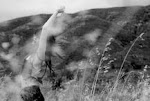
Exquisite restaurants in Buenos Aires are plentiful and though beef is the most popular dish, the city has been diversifying it's culinary options for years. With new restaurants popping up everywhere, one has a hard time deciding where to go. Some restaurants are hip, some are classics, some are innovative, romantic, exotic, etc. so, in the end it's all about your mood for that day.
Whether it’s Italian, Mediterranean, Peruvian, Vietnamese or French that you fancy, there is a place to satisfy your whims. But, every now and then, you may also ask yourself: where's the wine?
Many restaurants in Buenos Aires have a short, basic wine list as they are given a selection of wines by specific bodegas so that they "promote" them to their customers. This way, people get to taste and learn about these wines. For the bodegas, having their products in restaurants is indeed a good way for their wines to get out there and it also works well for restaurants, as they have a good selection of wines for their customers provided by the bodegas at a good price (if not for free).
However, some restaurants take their wine selection quite seriously and make a constant effort to actively search for the best wines available in Argentina and the world to include in their cavas.
Below are some examples that we think you'll enjoy:
Sottovoce
Sober and plain atmosphere. An interesting variety of pasta and the best wines to go with your meal.
Address: Libertador 1098, Recoleta, Buenos Aires..
El Mirasol
Classic, with a history of satisfying even the most demanding palates. Their wine list is long and fantastic. If you like Malbec, Catena Zapata Estiba Reservada (1996) is possibly the best wine you'll ever try! It's vintage, so obviously the price is on the high side. Our favorite waiter is: Franklin. Hi Franklin!
Address: Posadas 1032, Recoleta,. Buenos Aires.
Danzon
Modern industrial wine bar with flowers and candles everywhere; Danzón was the first winery in the city. Possibly one of the best wine lists in all of Buenos Aires.
Address: Libertad 1161, Recoleta, Buenos Aires.
Oviedo
Delicious food and wine. This place has only one thing in mind and that is to blow your mind! grilled meats, fresh fish, roasted lamb, risotto, among other exquisite preparations here are hard to equal. Their wine list is outstanding. Try the Achaval Ferrer Quimera 2006.
Address: Beruti 2601, Barrio Norte, Buenos Aires.
These recommendations are only a small portion of the many choices awaiting you wine lovers in Buenos Aires. Tell us which ones you like or if there are any that you'd like for us to include in our list!
Enjoy!
x Mich








































